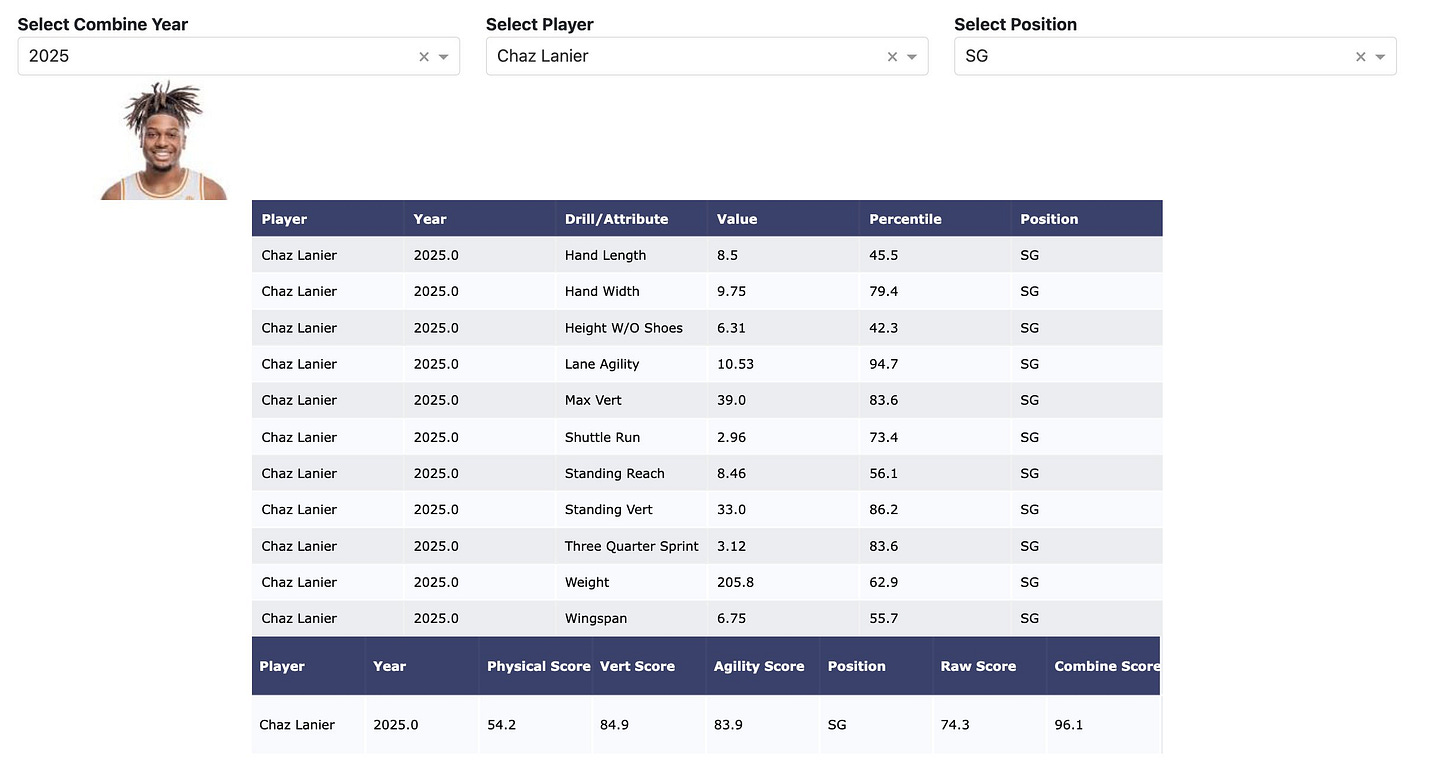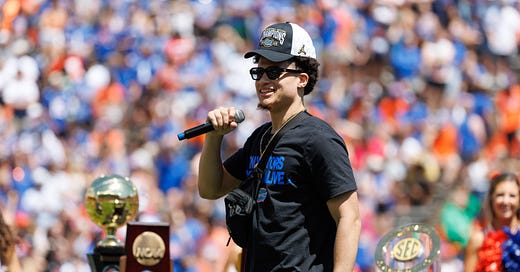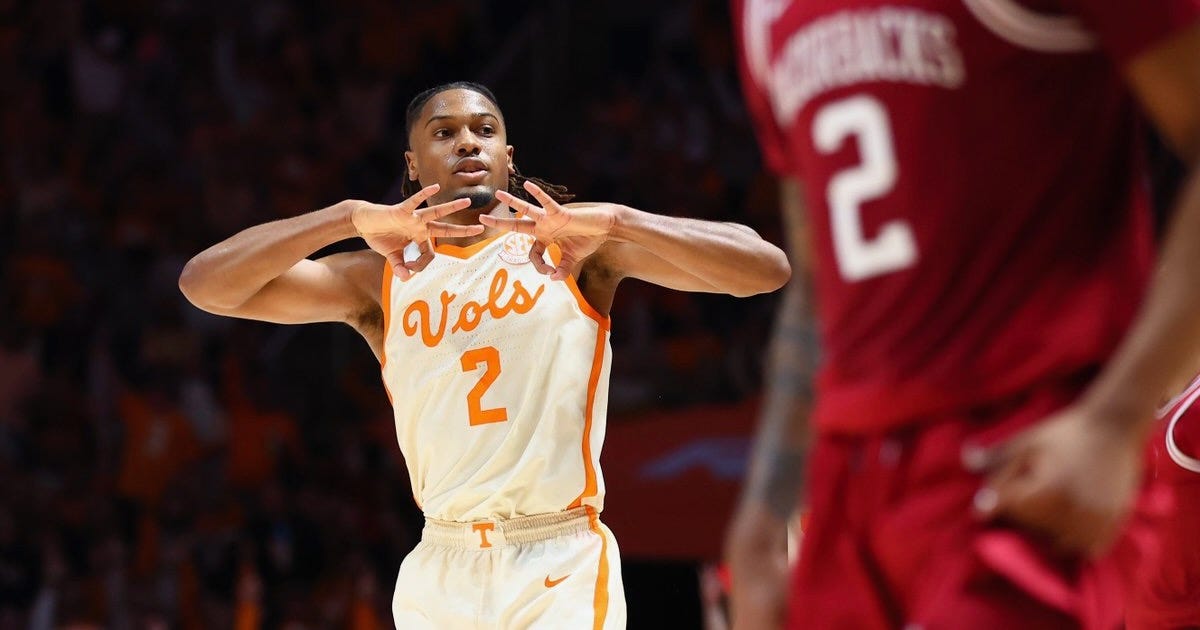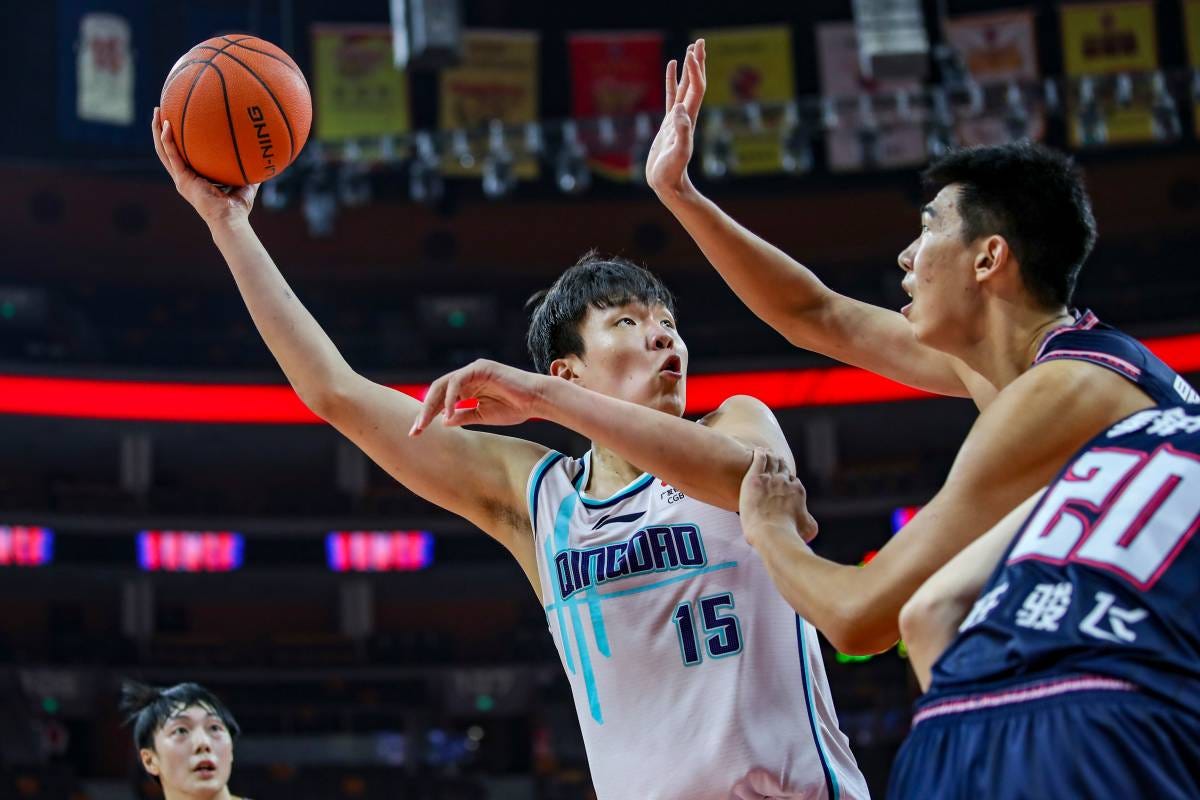Players Who I Think Could Go Much Higher on Draft Night
I love draft night surprises. One of the big reasons why I love this process so much is that I love the feeling of knowing the players who come into the NBA, thinking about how they will fit with their team, and even more. In some ways, I love the feeling of being wrong on draft night. Maybe it is overly reflective, but I love when a player goes way higher or lower than I had them ranked, whether it was Jett Howard, Ajay Mitchell, or Leonard Miller, or even more exciting, the player you loved so much more than everyone else going high, and feeling validated in your evaluation. Pacome Dadiet, I am counting on you :)
So, who could those players be in this class? Wel,l I think I have an idea of who they could be. This isn’t who I am higher on; some of these players I am not that high on in general, but I will be looking at Rookie Scale’s Consensus Big Board to rank these players, and how high I could see a team buying into their specific skillset. Let’s theorize.
Chaz Lanier: #39
39 isn’t that low, and Lanier is a player who has been in draft talks since the start of the season, but I think there is a real chance he goes towards the end of the first round. Transferring in from North Florida to Tennessee, Chaz Lanier was meant to fill some of the scoring and shooting void left by Dalton Knecht entering the NBA, and while he wasn’t quite at Knecht’s level of off the dribble creation, Lanier was one of the best shooters in the country, earning himself an All-SEC selection, and was a third team All American on some publications. I have Lanier near the top of my players with a two-way contract grade, hovering in a group of players from 44 to the late 50s. Lanier’s shooting gives him one of the most bankable skills in this entire class, being able to take jumpers off all kinds, and having a real off-the-ball shooter’s NBA profile.
Lanier has a real case as a potential late first-rounder based on fit. It can be hard to find shooters of Lanier’s skill on cheap contracts, and while these players don’t always contribute game to game in the playoffs, they can be incredibly valuable as regular season innings eaters, and offer value as chess pieces in a playoff series. Think Duncan Robinson, Isaiah Joe, or Joe Harris, all of whom have been incredibly valuable in different contexts. In a scheme that utilizes Lanier’s skill, but most importantly taps into his athleticism, he showed at the combine but didn’t always show off on tape as a defender or driver, I could see a team having a first-round grade on him, especially if players they like are already off the board.

What is so often forgotten about in the draft media space is how important a developmental plan for a player is. Lanier showing off not just good verticality, but incredible agility scores for his position could mean there is more upside than someone who had relatively unexciting defensive tape, and NBA teams could believe in his talent more than his current skills, and see a quick fix for his defensive woes.
Hansen Yang: #41
Yang is someone whom I have really struggled to evaluate. The incredibly skilled Chinese big man has kicked ass at every level of competiton he has been shown so far. From international competition to the Chinese Basketball Association, where he averaged 15+ PPG over the past two seasons as an 18 and 19-year-old. My issue lies in his defensive role in the NBA. The level of play in the CBA isn’t particularly high, and while he shows off his massive hands and generally good body control as a shot blocker, his foot speed isn’t good. Seeing him play in the Combine Scrimmages gave me some hope, as he had looked better there than he did in his Summer League games with the Chinese National team a summer ago, but I am still positive he never contributes in the playoffs.
The case for Yang could be that he is so productive as an offensive player that it doesn’t matter how he is on defense, and he has a route to being a very valuable regular-season big man. Plenty of teams didn’t have a backup center in the playoffs this season, or went to platoons of small 5s and rotation bigs. The Pacers excelled with small stints of Thomas Bryant and Tony Bradley, the latter of whom I didn’t even know was in the league until the playoffs, in addition to using Obi Toppin at the 5. If Yang can just survive for 8 minutes a night, I could see him bringing value.
Walter Clayton Jr: #28
I was very surprised when I saw Clayton this low on the consensus board. It is pretty rare to find a player with this resume with this level of shotmaking, coming off the season he did.
I personally have the reigning NCAA Tournament Most Outstanding Player at 21 on my board, and I feel like I am too low. He feels like one of the most surefire role players in this class, with clear upside as a shot creator and guard who brings value in the playoffs in the Payton Pritchard to Fred VanVleet type of role.
There isn’t just a case for Clayton to go higher based on theory; there are clear, tangible fits in the first round higher than 28 that make so much sense. The Orlando Magic at 16 is a match made in heaven, with Clayton bringing shooting and offensive juice from the guard spot that the Magic need, and Clayton would even get to stay in the state of Florida. I could see the Heat having a case for Clayton at 20 as well, once again keeping him in the state of Miami, but the idea of Head Coach Erik Spoelstra weaponizing a shooter of Clayton’s skill makes the endorphins run through my body.







